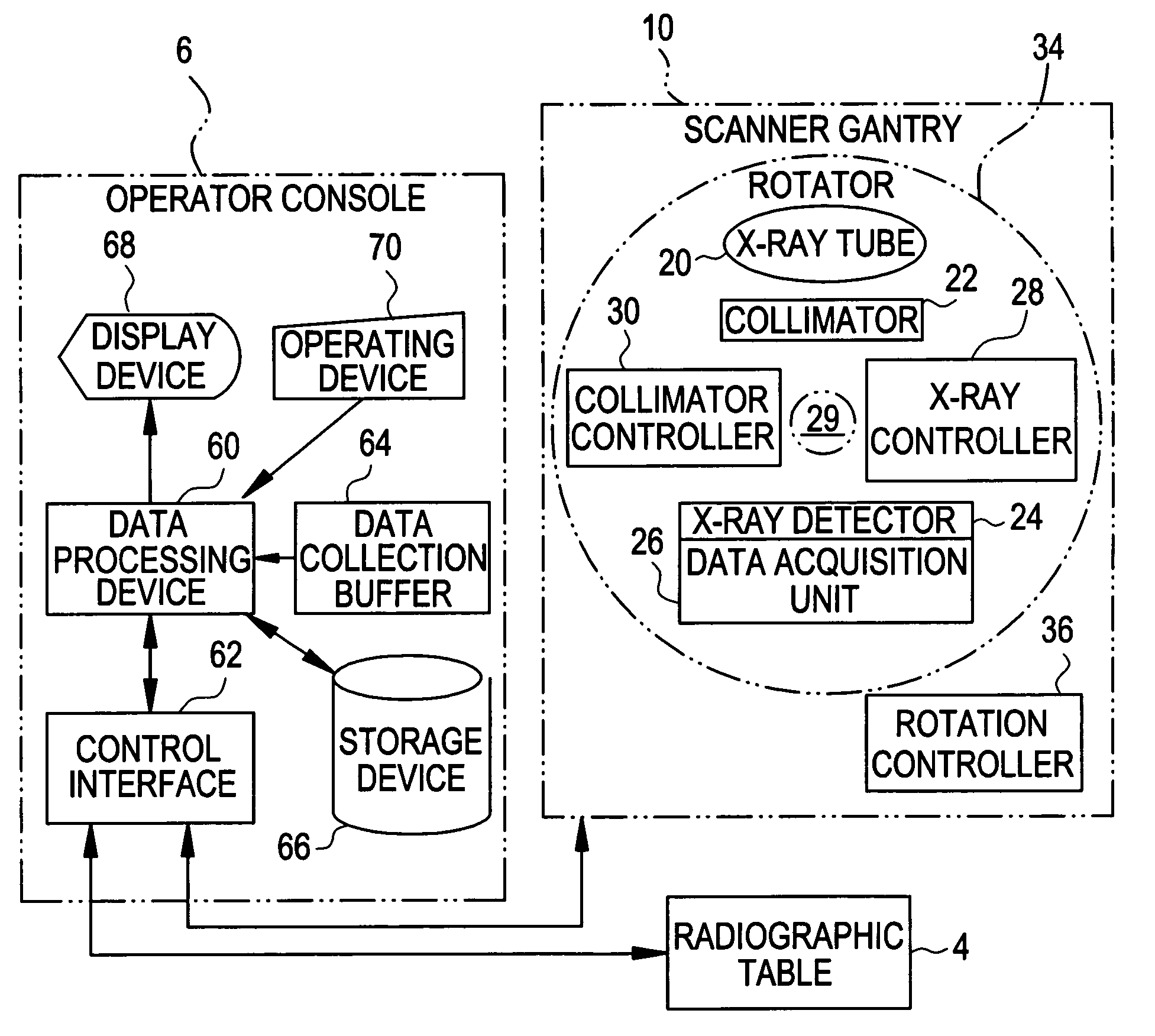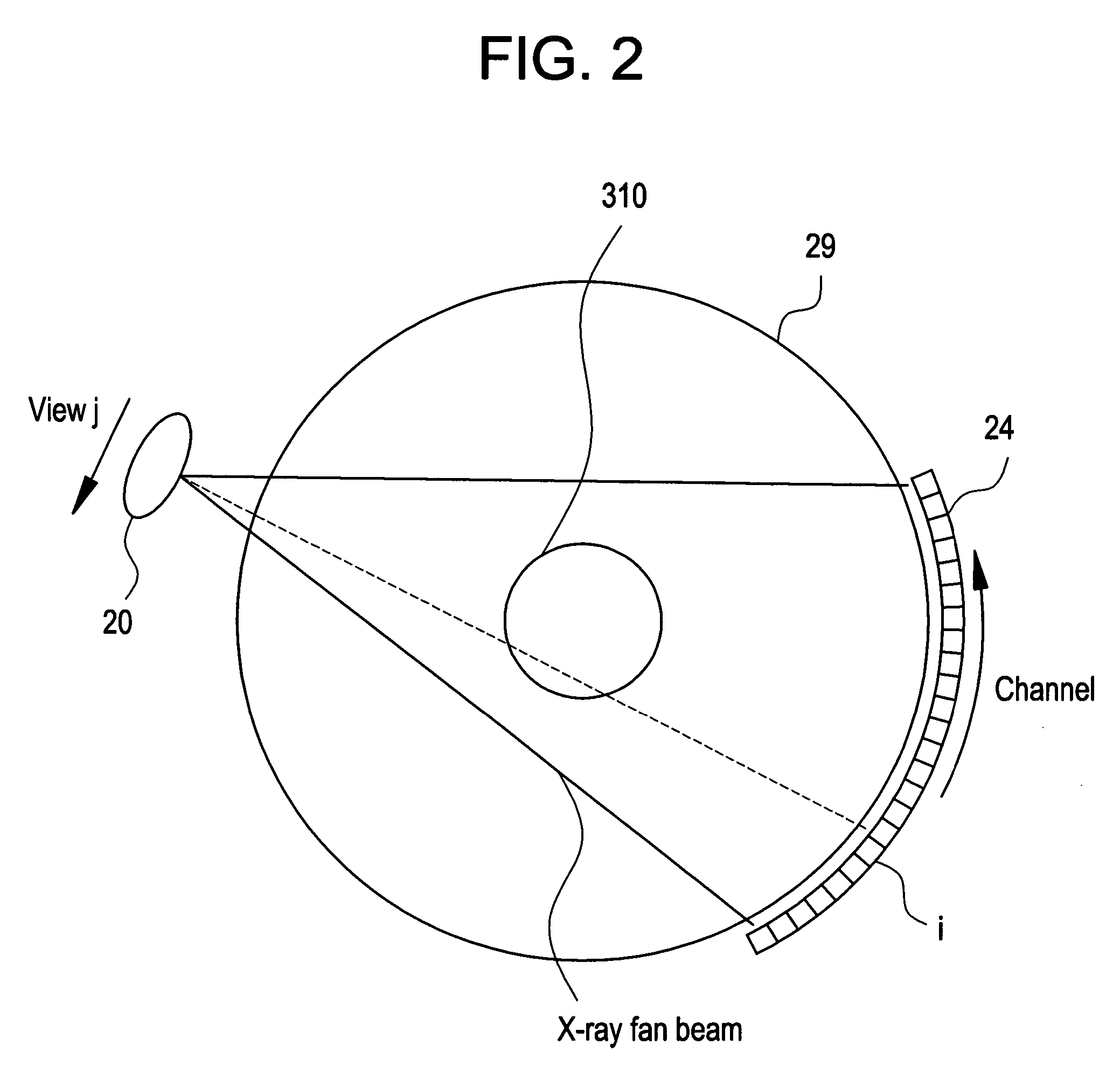X-ray CT image reconstruction method and X-ray CT system
a technology of x-ray ct and image reconstruction, applied in tomography, applications, instruments, etc., can solve the problems of poor image quality, poor spatial and poor image quality, so as to improve the image quality of tomographic image of the delicate lung field and the resolution of tomographic image occurring
- Summary
- Abstract
- Description
- Claims
- Application Information
AI Technical Summary
Benefits of technology
Problems solved by technology
Method used
Image
Examples
first embodiment
[0057] To begin with, the overall configuration of an X-ray CT system according to the first embodiment will be described below. FIG. 1 is a block diagram showing the X-ray CT system. As shown in FIG. 1, the X-ray CT system includes a scanner gantry 10 and an operator console 6.
[0058] The scanner gantry 10 includes an X-ray tube 20. X-rays that are not shown but are radiated from the X-ray tube 20 are reshaped into a conical X-ray beam, which fans out and is thick, by a collimator 22, and are irradiated into an X-ray detector 24.
[0059] The X-ray detector 24 has a plurality of scintillators set in array in the form of a matrix in a direction in which the fan-beam X-rays spread. The X-ray detector 24 is a multi-channel detector that is wide to have the plurality of scintillators set in array in the form of a matrix.
[0060] The X-ray detector 24 offers an X-ray incidence surface, which is curved in a concave manner, as a whole. The X-ray detector 24 is a combination of scintillators ...
second embodiment
[0091] According to the first embodiment, the first enhancement is performed on views contained in fan-bean data. Alternatively, the second enhancement may be performed on a plurality of fan-beam data items detected at locations in a depth direction. According to the second embodiment, the second enhancement is performed on fan-beam data items identified with different row numbers that are successive in the depth direction.
[0092] A hardware configuration and acquired data items employed in the second embodiment of the present invention are identical to those shown in FIG. 1 to FIG. 3. An iterative description will therefore be omitted. Moreover, a flowchart describing actions to be performed by the data processing device 60 is identical to that of FIG. 4 except that the second enhancement is substituted for the first enhancement at step S403. The iterative description of the actions will be omitted, but only the second enhancement to be performed at step S403 will be described belo...
third embodiment
[0100] According to the first and second embodiments, the first or second enhancement is performed on projection data items contained in fan-beam data and identified with view numbers or row numbers in order to minimize a decrease in a resolution occurring in a reconstructed tomographic image. Alternatively, after image reconstruction is completed, the third enhancement may be performed in order to sharpen pixels so that a pixel in an image whose distance from a pixel associated with a scan center position is longer will be sharpened to a greater degree. Thus, the decrease in a resolution occurring in a perimetric part of an image may be reduced. According to the third embodiment, the third enhancement of sharpening pixels in reconstructed image data so that a pixel whose distance from a pixel associated with a scan center position is longer will be sharpened to a greater degree is performed after completion of image reconstruction.
[0101] A hardware configuration and acquired data ...
PUM
 Login to View More
Login to View More Abstract
Description
Claims
Application Information
 Login to View More
Login to View More - R&D
- Intellectual Property
- Life Sciences
- Materials
- Tech Scout
- Unparalleled Data Quality
- Higher Quality Content
- 60% Fewer Hallucinations
Browse by: Latest US Patents, China's latest patents, Technical Efficacy Thesaurus, Application Domain, Technology Topic, Popular Technical Reports.
© 2025 PatSnap. All rights reserved.Legal|Privacy policy|Modern Slavery Act Transparency Statement|Sitemap|About US| Contact US: help@patsnap.com



